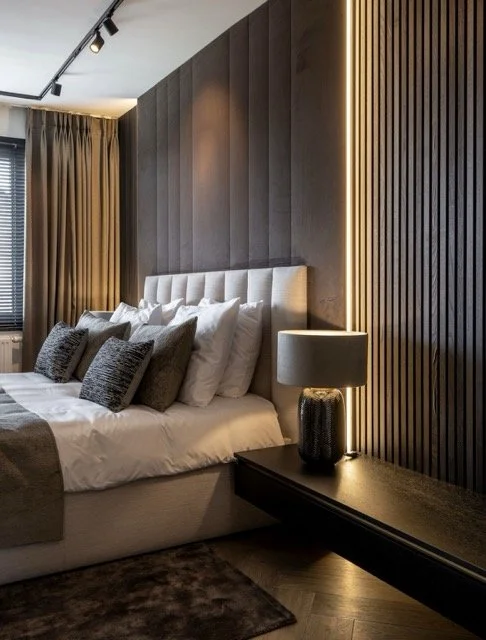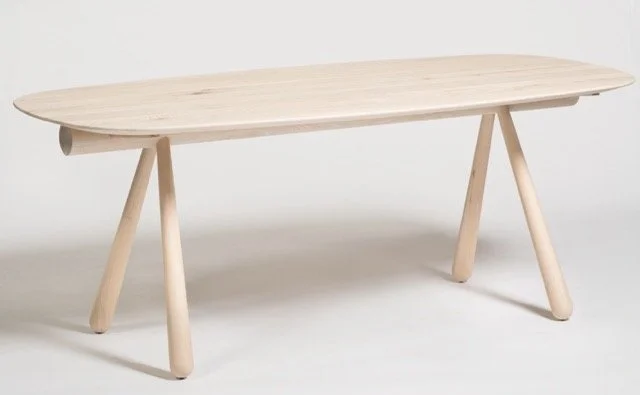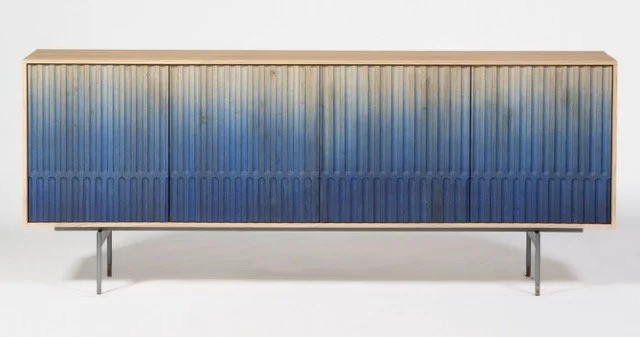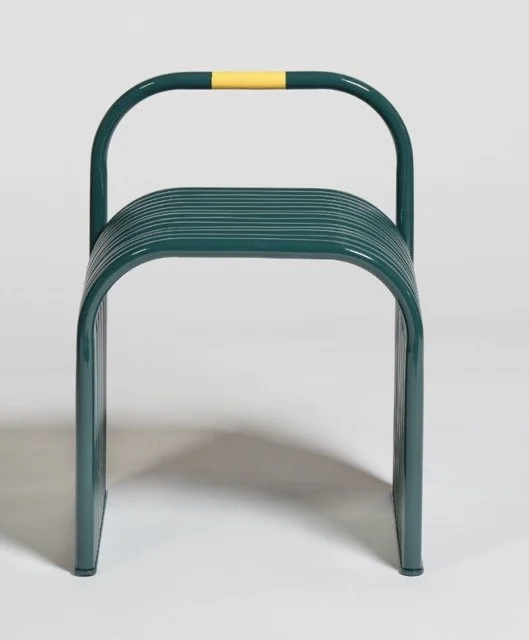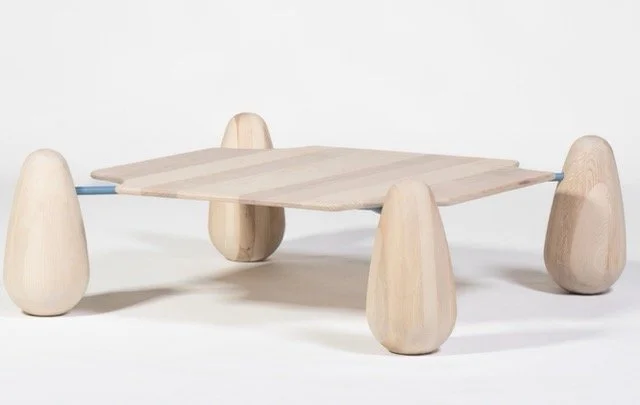Hotel design: the importance of customization for customer experience and sustainability
"The details are not the details. They make the design.
"
Made-to-measure fittings: a lever for image and lasting comfort
In today's hotel world, bespoke design is more than just an aesthetic choice; it's a strategic investment. When every detail is designed specifically for an establishment, the results are evident in both the customer experience and long-term profitability.
Create an ambience consistent with the hotel's identity
The soul of a hotel is revealed right from the start. Every day, I see how customized furnishings can give tangible form to a hotel's identity. Through custom-made furniture, hoteliers can tell a unique story, that of their brand.
A reception counter designed specifically to reflect the spirit of the place makes a more lasting impression than a standard model. Similarly, headboards sculpted in an exclusive pattern become the visual signature of the establishment. This aesthetic coherence creates an immersive environment where each element contributes to the overall experience.
Customization also offers the possibility of subtly integrating the hotel's own color codes and graphic elements, reinforcing its visual recognition with guests.
Promoting sustainability through appropriate choices
Beyond the visual aspect, bespoke furnishings are a guarantee of durability. Indeed, when I design furniture for a hotel, I take into account the specific constraints of each space.
Made-to-measure parts adapt perfectly to the exact dimensions of the site, avoiding the problems of premature wear and tear associated with ill-fitting installations. What's more, the choice of materials can be optimized according to the frequentation and use of each area.
For a busy lobby, we prefer high-resistance coatings, while for exclusive suites, we can opt for noble materials that will develop an elegant patina over time.
Reduce maintenance costs over the long term
The initial investment in bespoke furnishings may seem substantial, but an analysis of the overall cost reveals its profitability. Firstly, furniture designed specifically for hotel use requires less maintenance.
What's more, their design incorporates practical day-to-day maintenance considerations from the outset. Housekeepers particularly appreciate easy-to-clean surfaces and accessible structures that reduce the time spent on each room.
In the event of damage, targeted repair of specific elements is often possible, unlike standard furniture, which usually requires complete replacement. This modularity represents substantial savings over the lifetime of the furniture, while maintaining perfect aesthetic consistency year after year.
Tailor-made solutions for every space
Customized furnishings represent a precise response to the unique requirements of each hotel space. By adapting furniture to specific architectural and functional requirements, establishments can create aesthetically pleasing yet practical spaces that perfectly meet the needs of their clientele.
Bedrooms: headboards, closets, built-in desks
The hotel room is the most intimate part of a guest's stay. Made-to-measure headboards offer a distinctive visual signature while integrating practical features. Customization options are numerous: solid wood, laminated panels, natural veneer finishes (oak, walnut, teak) or lacquered to RAL codes. The integration of lighting, USB sockets and storage elements transforms these rooms into functional elements.
Built-in closets and desks optimize available space by adapting perfectly to room dimensions. Their design can include silent closing systems, automatic lighting and interior fittings that can be adapted to the specific needs of the establishment.
Lobby: reception counters, decorative screens
The lobby, the customer's first impression, deserves special attention. A bespoke reception desk can incorporate technological elements to facilitate check-in while reflecting the establishment's identity. Noble materials such as marble, solid wood or powder-coated metal panels create a lasting impression of quality.
Decorative screens can be used to delineate different functional zones without completely partitioning the space. These architectural elements, whether in laser-cut metal, openwork wood or acoustic panels, add an aesthetic dimension while structuring the lobby space.
Restaurant and bar: buffets, banquettes, free-flowing traffic
The design of catering areas requires meticulous planning. Tailor-made buffets combine practicality for serving with an aesthetic consistent with the venue's identity. Fixed banquettes optimize space utilization while creating intimate zones for guests.
Free-flowing traffic is essential in these areas. A well thought-out layout facilitates the work of staff while ensuring the comfort of customers. Adequate spacing between tables enables customers using mobility devices to navigate easily around the restaurant.
Common areas and PRM: accessibility and modularity
Modular solutions transform common areas into multi-purpose spaces. Modular furniture allows areas to be quickly reconfigured according to need: business meetings, social events or relaxation areas.
For people with reduced mobility, accessibility must never compromise aesthetics. Integrated access ramps, height-adjustable counters and adapted walkways meet standards while preserving the visual harmony of the establishment. These features also benefit other customers, such as families with baby carriages or travellers with luggage.
Materials and finishes for the hospitality industry
The choice of materials is the fundamental technical element of any successful hotel design project. The careful selection of components and finishes determines not only the aesthetics, but also the longevity and functionality of the installations.
Solid wood, laminate, powder-coated metal
Solid wood brings incomparable warmth and natural nobility to hotel spaces. I often prefer oak and walnut for their exceptional resistance and patina, which becomes more beautiful over time. For high-traffic areas, high-pressure laminate offers a relevant alternative thanks to its resistance to shocks, scratches and humidity.
Powder-coated metal can be used to create lightweight yet robust structures. In this process, powder paint is applied to the metal, then baked on to produce a perfectly uniform, long-lasting finish. Legs, reception counters and decorative elements made with this technique stand up remarkably well to everyday wear and tear.
Technical and flame-retardant fabrics
Hotel regulations require the use of fire-resistant textiles. Fortunately, manufacturers now offer collections of technical fabrics that combine safety and aesthetics. These fabrics are generally M1-treated (non-flammable) and offer abrasion resistance in excess of 50,000 Martindale cycles.
Coated fabrics also have the advantage of being easy to clean, an invaluable feature for establishments catering to a varied international clientele. Fire-retardant decorative wall coverings harmoniously complement these furnishings, while complying with safety standards.
ERP standards: safety and resistance
Établissements Recevant du Public (ERP) such as hotels must comply with strict standards. All materials used must be certified for their fire resistance and stability. The M0 to M4 classification indicates the degree of flammability, with M0 being non-combustible and M4 easily flammable.
Indeed, beyond the aesthetic aspect, safety remains the top priority. Laminated glass, resistant composite panels and non-slip floor coverings all contribute to creating a safe environment while preserving the elegance of the premises.
Aesthetics and durability combined
The art of hotel design lies in its ability to combine beauty and longevity. Noble materials such as marble, judiciously used in less stressed areas, add a touch of luxury. For heavily used surfaces, quartz composites offer a similar aesthetic with superior resistance.
Finally, our sustainable approach favors FSC- or PEFC-certified materials for wood, low-VOC-emitting paints and recyclable coatings. This eco-responsible approach, which is increasingly sought after by an aware clientele, also strengthens the establishment's brand image, while guaranteeing the longevity of its facilities.
Comfort and ergonomics for customers and staff
Ergonomics in hotel design transcends mere aesthetics to create functional spaces where guests and staff move in harmony. Thoughtful design not only ensures comfort, but also optimizes the overall experience and productivity of staff.
Clever, space-saving storage
Optimizing space is a major challenge in hospitality establishments. Intelligent storage solutions can maximize every square meter without compromising the elegance of the premises. For example, raised beds with integrated storage offer guests a discreet place for their luggage while freeing up floor space.
In the bedrooms, bespoke closets with modular interior layouts are perfectly adapted to the specific needs of each establishment. These systems enable efficient organization of linen, accessories and equipment, reducing the time spent in each room by maintenance staff.
Moreover, centralized, well-organized storage areas for maintenance supplies increase operational efficiency. High-density mobile storage systems can store the same quantity of items in half the space normally required, freeing up valuable areas for other functions.
Smooth movement through spaces
Intuitive circulation design significantly improves the customer experience. A well-thought-out layout facilitates the work of staff while ensuring guest comfort. Successful hotels create distinct paths for guests and staff, avoiding crossovers that disrupt the experience.
Indeed, separating service circuits from public areas helps maintain the illusion of effortless hospitality. Some luxury establishments even use tunnels to conceal behind-the-scenes functions from guest circulation areas, reinforcing the intimacy of the property.
Transition areas such as corridors deserve particular attention in their sizing. They must be wide enough to allow easy passage of people with reduced mobility and staff with their maintenance carts.
Easy to service and maintain
Furniture designed with maintenance in mind significantly reduces long-term operating costs. Easy-to-clean surfaces and accessible structures reduce the time needed for daily maintenance.
Structured furniture inspection and preventive maintenance protocols can reduce emergency replacements by up to 30%. This proactive approach includes tightening hardware, replacing worn castors and regularly checking fabrics and upholstery.
Well-thought-out ergonomics benefit staff and customers alike. Efficient workspaces for maintenance staff, including kitchens, laundry and storage areas, can reduce floor space requirements while improving operations and the customer experience.
Conclusion
Custom fixtures and fittings are much more than just an aesthetic trend in the modern hotel industry. It's a strategic investment that shapes a hotel's identity while ensuring its economic sustainability. With each piece of customized furniture, the hotel tells its own unique story and creates the memorable experience that guests are looking for.
Noble materials and meticulous finishes play a key role in this quality approach. Oak, walnut, high-pressure laminate or powder-coated metal - each choice meets precise requirements in terms of use, aesthetics and durability. This attention to detail translates into significantly reduced maintenance costs over the long term.
Ergonomics and functionality, often neglected in favor of appearance, are essential to satisfy both customers and staff. A well thought-out layout optimizes circulation, facilitates daily maintenance and transforms every space into a pleasant place to live or work.
Complete customization also enables the harmonious integration of ERP safety standards without compromising overall aesthetics. This responsible approach enhances the establishment's brand image with customers who are increasingly sensitive to environmental issues.
In conclusion, made-to-measure embodies that perfect blend of beauty, functionality and sustainability that exceptional hotel establishments are looking for. If you'd like to explore this subject further, our catalog of inspirations is available on request. Our hotel design experts are also available to discuss your specific project.
What's the budget for a bespoke hotel layout?
The budget for bespoke furnishings varies greatly according to the hotel's level of sophistication. The more upscale the hotel's positioning, the higher the expectations in terms of materials, finishes and personalization.
Here are some indicative ranges:
3-star hotels: between €200 and €400/m² of fitted-out space. Objective: robustness and functionality.
4-star hotels: between €400 and €700/m². A balance between aesthetics, comfort and durability.
5-star hotels: between €700 and €1,200 / m². Made-to-measure furnishings, noble materials, meticulous finishing.
Palaces / exceptional hotels: usually over €1,500 / m². Each piece becomes virtually unique, incorporating a high level of detail and craftsmanship.
These budgets should be seen as a long-term investment, since a high-quality layout improves image and customer experience, and limits maintenance costs over the long term.
FAQs
Q1. Why is bespoke design important in the hotel industry? Tailor-made furnishings are crucial in creating a unique ambience that reflects the hotel's identity, optimizing the use of space, and ensuring the durability and functionality of furniture, thereby enhancing the customer experience and reducing costs in the long term.
Q2. What are the advantages of materials suitable for the hotel industry? Hotel-specific materials, such as solid wood, high-pressure laminate and fire-retardant fabrics, offer greater resistance to wear and tear, comply with safety standards and combine aesthetics and durability, ensuring a profitable investment over the long term.
Q3. How does ergonomics influence the comfort of customers and staff? Well-thought-out ergonomics optimize space circulation, facilitate staff work and improve customer comfort. It translates into clever storage, fluid circulation and layouts that simplify maintenance, thus contributing to a positive overall experience.
Q4. What customized solutions are available for the different areas of a hotel? Each area benefits from tailored solutions: bedrooms with integrated headboards and closets, the lobby with personalized reception counters, the restaurant with made-to-measure buffets, and communal areas with modular furniture, all designed to optimize space and the customer experience.
Q5. How does bespoke design contribute to a hotel's sustainability? Made-to-measure furnishings promote sustainability by using quality materials suitable for intensive use, facilitating care and maintenance, and enabling targeted repairs rather than complete replacements. This reduces long-term costs and extends the life of furniture.
A customized layout project?
Our experts are with you from idea to installation. Design, materials, technology: let's discuss your needs




